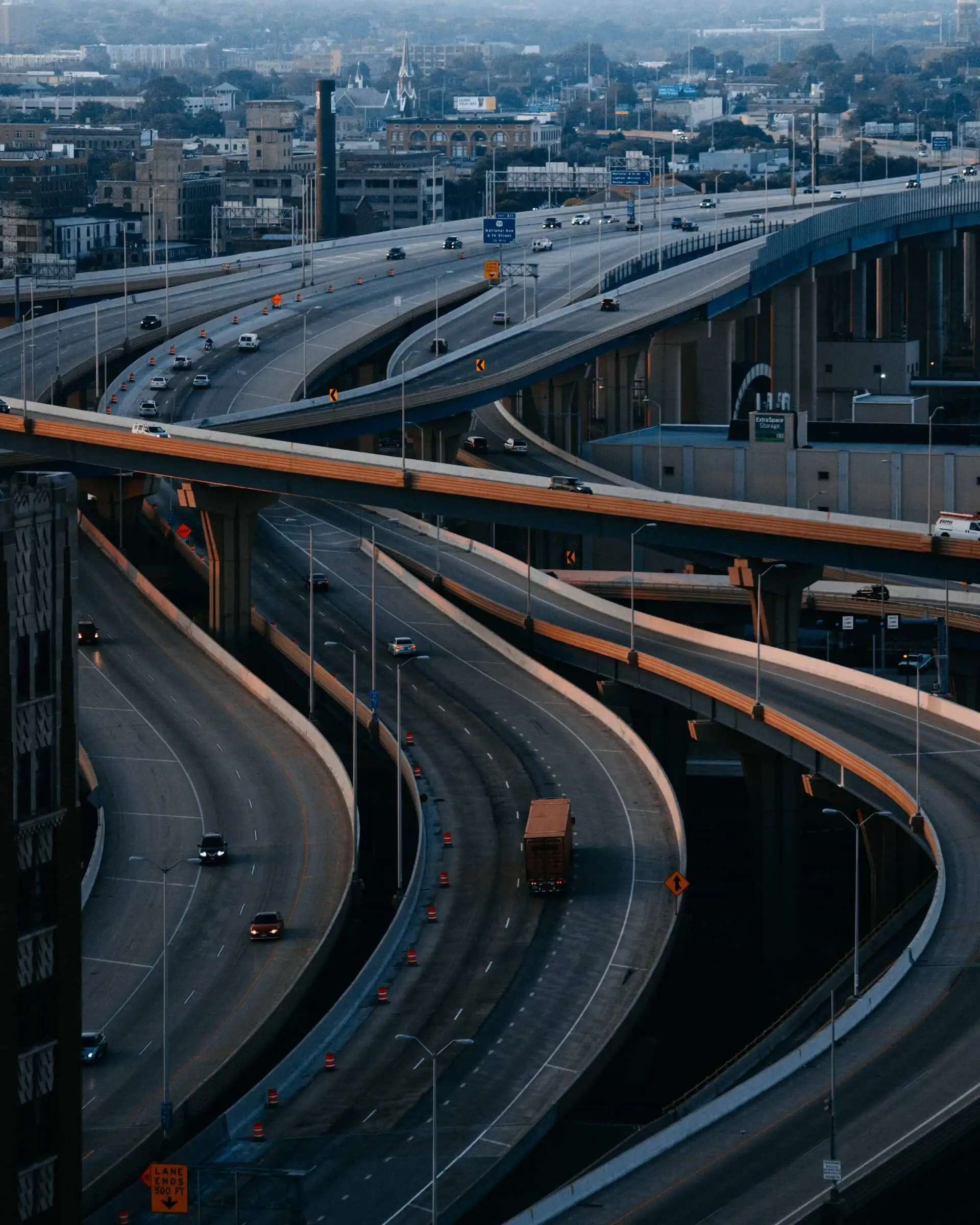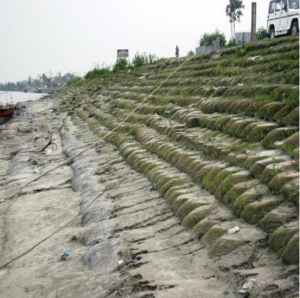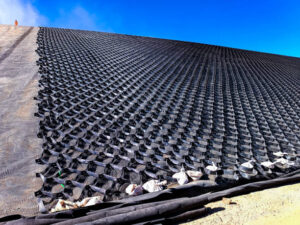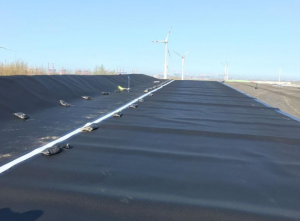Sanitation Water Filtration Project in Zuarinagar, Goa: A Case Study
Introduction
Access to clean and safe water is a critical challenge in urban and industrial areas, where contamination from wastewater and industrial effluents poses serious environmental and health risks. One of the most effective solutions for ensuring proper sanitation and water filtration is the use of geosynthetics, particularly HDPE (High-Density Polyethylene) liners, which provide a reliable barrier against contamination.
In Zuarinagar, Goa, a sanitation water filtration project was initiated to improve water quality and prevent groundwater contamination. Ocean Non Wovens was proud to contribute to this project by supplying and installing 1000 SQM of Ocean HDPE Liner 2000 Micron, ensuring long-term water safety and filtration efficiency.
Table of Contents
Understanding the Role of Geosynthetics in Sanitation Water Filtration
Importance of Water Filtration in Sanitation Systems
Sanitation systems require efficient water filtration to separate contaminants, prevent leachate infiltration, and maintain a clean water supply. Contaminants such as heavy metals, bacteria, organic pollutants, and industrial chemicals can seep into groundwater if proper barriers are not implemented (EPA, 2023).
Geosynthetics, particularly HDPE liners, play a critical role in these systems by creating an impermeable barrier that prevents contamination and ensures safe water management (Geosynthetics Magazine, 2023).
Project Overview: Zuarinagar, Goa
Project Objectives
The key objectives of this sanitation water filtration project in Zuarinagar, Goa, included:
- Preventing the infiltration of contaminated water into surrounding soil and groundwater sources.
- Enhancing the efficiency of filtration by providing a durable and impermeable liner system.
- Ensuring long-term sustainability with minimal maintenance requirements.
Challenges Faced
The project site in Zuarinagar, Goa, posed several challenges:
- High Industrial Waste Levels – The area has multiple industries that contribute to water pollution.
- Heavy Rainfall & Humidity – Goa’s tropical climate required a liner that could withstand moisture and UV exposure.
- Soil Erosion Risks – The presence of loose soil meant the liner needed excellent puncture resistance.
Why Ocean HDPE Liner 2000 Micron Was Chosen
Key Properties of HDPE Liner 2000 Micron
Our Ocean HDPE Liner 2000 Micron was selected for this project due to its superior properties:
- High Chemical Resistance: Protects against industrial chemicals and organic contaminants.
- Excellent Durability: Withstands mechanical stress, UV exposure, and environmental degradation.
- Low Permeability: Ensures minimal water seepage, improving filtration efficiency.
- Flexibility & Easy Installation: Allows seamless coverage even in uneven terrains.
According to research, HDPE liners have an impermeability rate of 1 x 10⁻¹⁴ cm/s, making them one of the most effective solutions for preventing contamination (International Journal of Environmental Science, 2022).
Implementation & Installation Process
Step 1: Site Preparation
Before liner installation, the site was cleaned, and the ground was leveled to prevent any punctures or damages.
Step 2: Liner Deployment
The 1000 SQM of Ocean HDPE Liner 2000 Micron was deployed across the filtration system’s base and walls, ensuring a complete barrier.
Step 3: Sealing & Quality Testing
Seams were welded using advanced thermal fusion techniques to guarantee a leak-proof barrier. Post-installation, the liner underwent hydraulic conductivity tests to ensure impermeability.
Impact & Benefits of the Project
Immediate Results
- Groundwater Protection: The liner prevented seepage of contaminants into the surrounding environment.
- Improved Water Quality: Filtration efficiency increased by over 95%, reducing harmful pollutants.
- Sustainability: The long lifespan of the HDPE liner minimized the need for frequent maintenance.
Long-Term Benefits
- Compliance with Environmental Regulations: The project adhered to national sanitation and water safety standards (Bureau of Indian Standards, 2023).
- Cost Efficiency: Reduced maintenance and replacement costs due to the liner’s durability.
- Scalability: The system can be expanded or modified based on future water treatment requirements.
Unique Insights: What Most Companies Don’t Talk About
The Hidden Impact of Inferior Liner Choices
Many companies opt for lower-grade liners to cut costs, but this can lead to premature failures, water leakage, and increased contamination risks. Studies show that thin or low-quality liners deteriorate within 5-7 years, leading to higher operational costs (Environmental Protection Journal, 2023).
The Role of Proper Installation
Incorrect installation can reduce liner effectiveness by up to 40%. Factors such as seam welding precision, subsoil preparation, and stress distribution must be optimized to ensure maximum performance.
HDPE vs. Other Liner Materials
- PVC Liners: More flexible but degrade faster under UV exposure.
- EPDM Liners: Good for smaller-scale applications but lack chemical resistance.
- HDPE Liners: The most durable and cost-effective solution for large-scale sanitation projects.
Why Choose Ocean Non Wovens for Sanitation Water Filtration Projects?
At Ocean Non Wovens, we specialize in providing top-quality geosynthetic solutions tailored for sanitation and water filtration projects. Our HDPE Liners are engineered for durability, chemical resistance, and long-term environmental sustainability. With a proven track record in projects like the Zuarinagar, Goa sanitation filtration system, we ensure expert installation, compliance with industry standards, and unmatched quality assurance.
For customized solutions and consultations, contact us today to explore how our geosynthetic materials can enhance your water filtration and sanitation projects.



